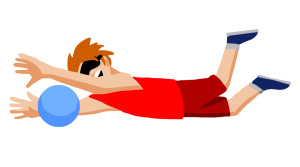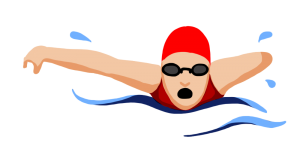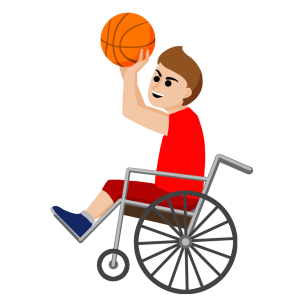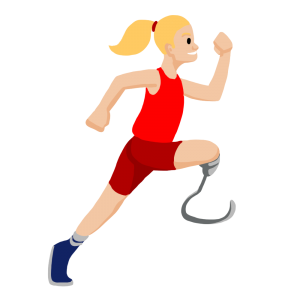Parasport is back in the headlines with the 2016 Paralympic Games underway in Rio de Janeiro, Brazil.
David Blair, a London 2012 Paralympian and Carleton University graduate, is a visually impaired para-athlete who competed in rowing at the Paralympic level and currently trains for triathlons.
He said parasport helped him truly feel a part of something and gave him something to be proud of.
“Having the opportunity to be included in a community helped me immensely in performing at a high level in my sport,” Blair said.
“Exercise is good for everyone, but for someone with [cerebral palsy] like me, it is vital for keeping mobility and independence up and spasticity at bay.”—Sonja Weilgart-Whitehead fourth-year English student
Which sports are parasports?
This year’s games features 22 sports, including the well-known wheelchair ball sports, various wheelchair and prosthesis track events, and para-swimming events.

The Paralympics also offers sports that have no equivalent in the Olympic Games, like boccia and goalball.
According to the official Paralympic website, boccia has competitors throwing or rolling coloured balls toward the target white ball—also known as the jack. The player or team with the most balls near the jack at the end of the game is the winner.
The website said that boccia is similar to lawn bowling, but is demonstrated with much more strategy and accuracy at a high-performance level.
Goalball is another sport unique to parasport events, according to the Paralympic website. In this sport, blindfolded athletes take turns bowling a ball with bells inside towards a net defended by opposing players on their hands and knees.
The classification system
Blair said he made the switch from competing in para-rowing to para-triathlon because he was deemed non-eligible.
“At the 2014 world championships, I was ruled non-eligible,” Blair said. “Non-eligible means that they’ve ruled that I’m not disabled enough to compete.”
But Blair said he did not compete in the Rio Paralympics because his classification was not given a competition spot in the games for the debut of the para-triathlon event.
“Another important thing to know is that my classification didn’t have a spot at Rio,” he added. “So while my declassification prevented me from competing at subsequent world championships, it isn’t the reason I didn’t compete in Rio.”
According to the Parasport Ontario website, all para-athletes compete in a sport class based on their impairment, which is reviewed throughout the athlete’s career.
Did you know? According to the International Triathlon Union, visually impaired para-triathletes compete alongside a guide.
“Classification is simply a structure for competition,” according to the website. “Athletes with disabilities are grouped in classes defined by the degree of function presented by the disability.”
This classification system is commissioned by the International Paralympic Committee (IPC) so para-athletes can compete equitably.
“If different impairments cause similar activity limitation, athletes with these impairments are allowed to compete together,” the IPC website stated. “This is why in athletics wheelchair racing events, you will see athletes with paraplegia and leg amputations racing together.”
Parasport Ontario stated there are 10 sport classes based on the impairments eligible for parasport competition.
“There are athletes who belong to six different disability groups in the Paralympic Movement: amputee, cerebral palsy, visual impairment, spinal cord injuries, intellectual disability, and . . . all those that do not fit into the aforementioned groups,” the website stated.
Visual impairment, one of the 10 listed, has its own classification system consisting of three classes. The B1

classification represents very little to no eyesight, while B3 is the minimum severe visual impairment required to compete in parasport.
According to the IPC, while sports like swimming and track and field are open to athletes with all impairment types, some only provide opportunities for one sport class.
Boccia is only for athletes with cerebral palsy or motor skill impairments, while goalball is made for competitors who are legally blind—at least a B3 on the classification chart.
The IPC also said sporting opportunities for other sports may be limited to a few impairment types.
Football five-a-side is for athletes with some sort of blindness—B1 for outfielders, B2 or B3 for goalkeepers, but football seven-a-side is for players with cerebral palsy or a traumatic brain injury.
Did you know? Athletics and swimming events are open to para-athletes with any of the 10 eligible impairments, according to the International Paralympic Committee.
Public perception of parasport
Blair said it’s vital to view parasports on the same level as general sport to break down the misconceptions that para-athletes face limitations.
He added that he thinks the Paralympics are still in a developmental stage.
“Evolving the classification standards is the next step that needs to be taken to elevate the level of [para]sport,” Blair said.
According to Blair, when para-athletes are tested for their classification, they must be tested in an environment that replicates the race conditions the athletes prepare for.
“When the athletes are viewed as participants—people happy just to be at the games—details like the lighting in the testing room, the type of test, and the condition of the athlete don’t seem to matter,” Blair said. “[But] when athletes are viewed as competitors . . . who have invested significant amounts of effort, time, and money in order to compete to the highest standard of their ability, the flaws with the system become more apparent.”
He said his dream is for the Paralympics to one day be equated to the Olympics.
“I want the quality to get so high that if commentators mention the athletes being inspiring only because of their disability, they would be embarrassed,” Blair said.
Nathan Bragg, a fifth-year Carleton journalism student and a parasport advocate, also said the media’s parasport event coverage must not reinforce stigmas surrounding disability.
“Sport is sport, regardless of disability,” Bragg said.
He added that while he worked in communications for the International Wheelchair Association at the Parapan-American Games in Toronto last year, he witnessed impressive parasport media attention.
“CBC had a lot of streams last year and is supposed to have even more for Rio,” Bragg said, and added he is happy the media has put a focused effort on improving coverage of parasport.

Sport is for everyone
Bragg said he first learned about parasport at the age of 12 when he began playing wheelchair basketball. Since then, he has played wheelchair basketball and wheelchair rugby, both recreationally and competitively.
Although he has competed at a high level and is a fan of the Paralympics, Bragg said he primarily views parasport as an activity that has helped him become more social and active in his community.
Bragg said he gives credit to parasport in helping him come to terms with his disability, because he thinks parasport is inclusive.
“Recreational parasport provides people with disabilities—and without, depending on the sport—an opportunity to stay fit and healthy,” he said. “[It] has a tremendous community feel to it which helps people in their everyday life, whether they were born with their impairments or acquired them later in life.”
Parasport at Carleton
Bragg said he is involved with Carleton’s Research, Education, Accessibility, and Design (READ) Initiative and the Carleton Disability Awareness Centre (CDAC) to provide recreational parasport opportunities for Carleton students.
Bragg said he helped run a wheelchair basketball camp at Carleton last year and has campaigned for more accessible fitness equipment in the campus gym.
Dean Mellway, the acting director of the READ Initiative, said he shares Bragg’s view on the importance of an athletic outlet for people with disabilities.
“Someone who is more active tends to have a more positive view on life,” Mellway said.
He said this is the primary reason why READ has put an emphasis on expanding the athletic equipment and sporting opportunities offered for people with disabilities.
“It is important that we make sure that Carleton athletics is welcoming to every student,” Mellway said.
Mellway said READ is involved with various efforts to improve athletic inclusion at the school, the most prominent one being the annual Walk N’ Roll event.
He said this event consists of teams walking or wheeling to raise money for clubs that provide recreational sports

opportunities for people with disabilities.
According to Mellway, the fourth annual Walk N’ Roll should take place sometime during the spring of 2017.
These initiatives and others aim to make sports more accessible for Carleton athletes like Sonja Weilgart-Whitehead, a fourth-year English student who competed in para-swimming on Carleton’s varsity swim team for two years, to find an athletic outlet.
Weilgart-Whitehead said she has cerebral palsy and credits her experience with sports in helping her cope better with her condition.
“Exercise is good for everyone,” she said. “But for someone with [cerebral palsy] like me, it is vital for keeping mobility and independence up, and spasticity at bay.”
Improving accessibility comes with awareness
Blair said the pool of people looking to get involved in parasport often lacks the depth to combat the expensive costs necessary to rent facilities and equipment.
“The best way to grow parasport is to integrate with able-bodied sport where possible,” Blair said.
Blair added it’s extremely difficult to develop and maintain parasport in any community because of high costs and low involvement rates.
He said increasing involvement should increase the overall quality of parasport, both recreationally and competitively—which can be accomplished through awareness.
“Just like the Olympics, as the quality of play improves, the less inclusive it becomes,” Blair said.
But Blair said impressive Paralympic performances by para-athletes help youngsters living with disabilities find role models, though they seldom lead to increased parasport funding.
“It does not create funding,” Blair said. “But it creates heroes.”
The Rio Paralympic Games began on Sept. 7 and will wrap-up on Sept. 18.

“Recreational parasport provides people with disabilities—and without, depending on the sport—an opportunity to stay fit and healthy.”—Nathan Bragg fifth-year journalism student






